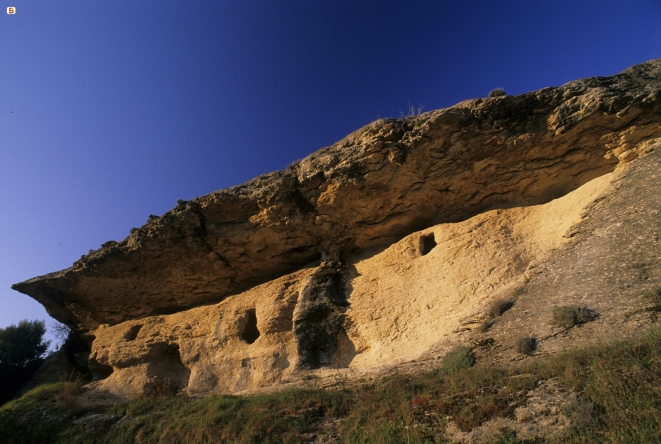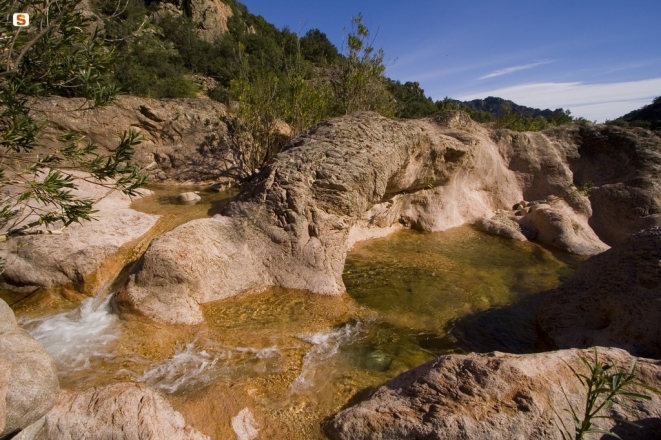The magic of the Janas
The small jana Mariedda to the discovery of man
Beyond the hills of Vagante Island, tagged into the rock or into the granite, there are the fairy houses, that open the doors of the enchanting world of the small creatures with the diffused light, precarious between dream and reality, and that are usually called Janas, in the Sardinian collective imagination.
They come from a far world, where spring is active constantly, because the native island of the mysterious and fantastic pixies moves itself continually, to the research of the hoped season that makes elegance to their majestic brilliance.
The periodic spring existence intentionally realized by who live with the light, in the course of the infinite centuries, has involved the transfer of the enchanted people such that they have earned the epithet of "people of Vacant Island". But, the happy stability of magical living, despite its movement beyond this world, as soon as possible, finished because of the eruption of the only insular volcano hung up between the waves, under which Pixies, through their peculiar nails, carved their magical houses into the rock.

That event aroused bewilderment and desperation among the incredible winged inhabitants such that they moved one more time. But, that time, something changed because, where the utopian places will be their future house, they will find other places where they will be able to show them and to give glee in harmony with their delicate wings, symptomatic of the attitude had in a precise moment.
These places dated back to the time, but, current historically, will be the nuraghes, the menhir, the caves or the numerous rock blankets of the extraordinary and likewise mysterious Sardinian territory, on which the Janas dig their houses, the Domus de Janas, through only their steel nails able to carve on natural materials stronger, but, at the same time, provided with thin and delicate hands such that they spoil them just crashing towards the leaves.
One of their village is spread towards the peak of the Montoe Hill, in Pozzomaggiore, in the logudorese territory, where sisters of "malas janas" of Tonara lived, and they were less evil, despite their specific talent of giving back for hundred times the evil that they received previously.
They spent the night weaving for creating wonderful linen and brocade clothes, incomparable tapestries that were typical of the Sardinian culture, and that are difficult to be forgotten after having looked them. A proof is given by the event when some men, during a night of festivities, between dances and songs created by the evocative sound by launeddas, were stricken by the presence of a woman with silvery eyes and blue hair who politely exhorted them to carry on their celebrations, but, with the only exception according to which she could take part in.
It was so and the Jana Mariedda, with the role of a young foreigner, began dancing su ballu tundu and, step by step, she was stolen jewels of her shawl and her dress, namely the silver filaments and water-marked golden buttons, weaved during the nights spent with her sisters of Montoe, who telepathically warned her about what was happening.
Her fury jumped on the men of the real world, whose knowledge was an interesting discovery for her until that moment, when she cursed that gesture transforming the precious goods in stones and straw. And, since that day, the wealth in Montoe is not a gift for the man of the Earth.

The jana Mariedda, become a fox, lingered into the dark woody valley, where, after having turned to stone a man who tried to kill her because he thought that it was an animal, met a child with black hair and a pleasing song, who, stooped in a stream, was washing the laundry of the prinzipales of that village, for earning something for living for her and her family.
The generous soul of the young girl, who nursed her after a wound made with a bear trap of the hunters, affected the Jana who spared her giving back for hundred times the good that she did, inviting her to her village, where the child could learn to weave the typical Sardinian clothes in exchange for gladdening the days of the good janas through her melodious songs.
Thanks to the art of the loom, the young girl had not to work at night anymore; but, the luck was mutual, because the jana Mariedda, desiderous of discovering the mankind, understood how is illuminating entrusting to the small hands of who, unlike the adults, still knows believe in the enchanted world of nature, children.
Actually, in the human world, of who has "the attitude of a child", if not quiet, at least hidden, the pixies and their magic live only between the chimeric words of people’s tradition, far from considering the Domus de janas, the houses of the pixies, but, underground tombs dated back to the Neolithic Epoch, often gathered in necropolis containing at least forty sepulchres, to which probably esoteric rituals to the Goddess Mother are connected.
She is a central and a key feminine figure of the Island, a symbol of fertility and love for nature. Nothing is more benevolent, to the detriment of who want frustrate the mythical traditions relating to the small creatures with magical wings and not higher than a palm of a hand, who, for protecting their light skin color, go out only at night, for giving a bit of chimeric madness to who still looks the world with the eyes of a child.